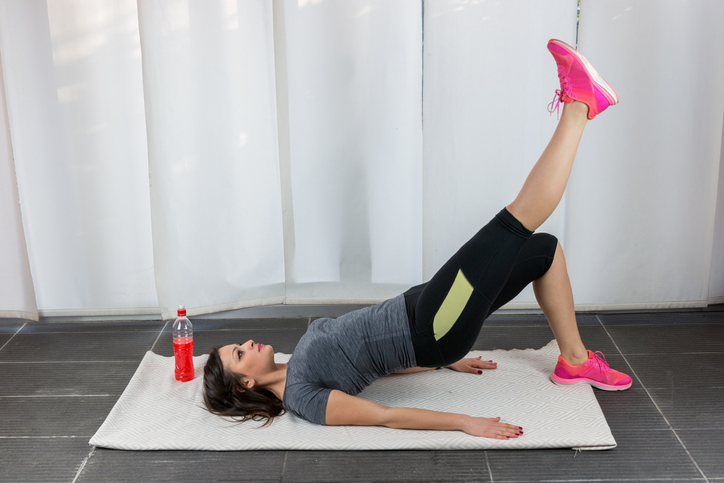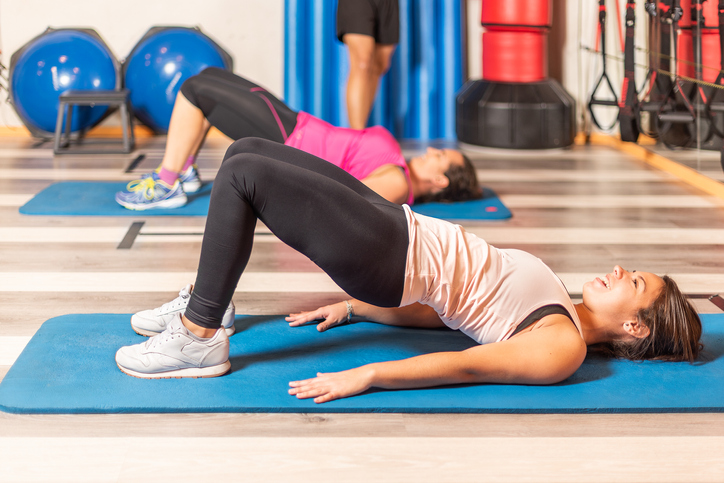Dysphoric milk ejection reflex (D-MER) is a condition that causes sudden negative emotions during...
Read More
Your pelvic floor muscles are critical in supporting your organs, maintaining bladder control and contributing to core stability. Whether recovering from childbirth, managing the effects of aging or simply looking to improve your posture and sexual health, prioritizing pelvic floor strength can enhance your overall quality of life.
“Your pelvic floor muscles enable essential bodily functions while helping stabilize your core,” said Vanessa Vander, Certified Pelvic Rehabilitation Therapist at Inspira Medical Center Mullica Hill. “However, factors like injury, childbirth and aging can weaken these muscles, potentially leading to issues like incontinence or prolapse.” Here are some exercises that can help keep your pelvic floor muscles strong and healthy.

Diaphragmatic breathing allows the pelvic floor muscles to work more efficiently while promoting stress management and relaxation. Begin by lying on your back and placing your hands on your abdomen. As you inhale, let your abdomen fill with air and rise. As you exhale, pull your abdominal muscles inward. You can do diaphragmatic breathing in various positions, such as sitting, side-lying, on hands and knees, standing or lying on your abdomen.
Kegel exercises are often recommended for strengthening the pelvic floor muscles. Start in a comfortable position—lying down, sitting or standing. Contract the muscles you would use to stop the flow of urine. Hold the contraction for three to five seconds, then relax for three to five seconds. Repeat this cycle 10 times.
As you progress, try to hold each contraction for up to 10 seconds, aiming for 30 to 40 repetitions spread throughout the day. Remember to keep your other muscles relaxed while focusing on your pelvic floor.
Modification tip: If you’re unsure whether you're doing Kegels correctly, try lying down to reduce the challenge of gravity, making it easier to isolate the pelvic muscles.

Toe taps help increase core stability while engaging your pelvic muscles. Lie on your back with your knees bent and feet on the floor. Keep your lower back flat against the floor by tilting your pelvis slightly forward. Slowly lift both legs into a tabletop position, keeping your knees bent. Gently lower one leg, tapping your toe on the floor while engaging your core and pelvic muscles. Return to the tabletop position and repeat with the other leg, alternating for 12 to 20 repetitions.
Modification tip: If this movement feels too challenging, you can keep your feet closer to the ground while performing the taps to reduce the range of motion.

The bridge pose is a popular exercise for strengthening both the pelvic floor and the core. Start by lying on your back with your knees bent and feet hip-width apart. With your arms by your sides, palms facing down, lift your hips toward the ceiling while keeping your shoulders and feet grounded. Hold the position for 5 to 10 breaths, then slowly lower your hips back down. Repeat this two or three times.
Modification tip: If you have lower back pain, place a yoga block or cushion under your lower back to support the movement.

Bird-dog exercises focus on improving core stability, balance and pelvic floor strength. Begin on all fours with your wrists aligned under your shoulders and knees under your hips. Keeping your spine neutral, extend your right arm forward and left leg back, forming a straight line with your body. Hold this position for a few seconds, then return to the starting position. Repeat with your left arm and right leg, alternating for 10 to 15 repetitions.
Modification tip: If balancing is difficult, try extending just one arm or leg at a time instead of both simultaneously.
Maintaining healthy bathroom habits can also support your pelvic floor health.
If you’re experiencing bladder issues or discomfort related to your pelvic floor, Inspira’s urogynecology program is here to help. Our specialists offer personalized care and treatment options to strengthen your pelvic floor health.

Dysphoric milk ejection reflex (D-MER) is a condition that causes sudden negative emotions during...
Read More
Polycystic Ovary Syndrome (PCOS) affects millions, yet many misconceptions still surround this...
Read More
Painful periods are not indicators of good fertility. Rather, they may signal underlying health...
Read More
The material set forth in this site in no way seeks to diagnose or treat illness or to serve as a substitute for professional medical care. Please speak with your health care provider if you have a health concern or if you are considering adopting any exercise program or dietary guidelines. For permission to reprint any portion of this website or to be removed from a notification list, please contact us at (856) 537-6772